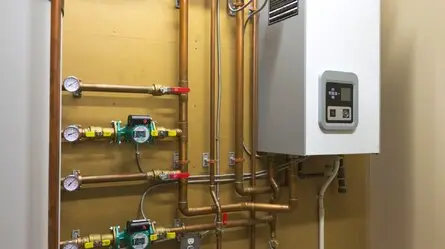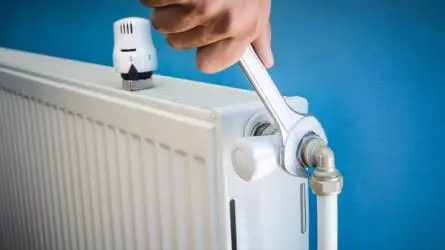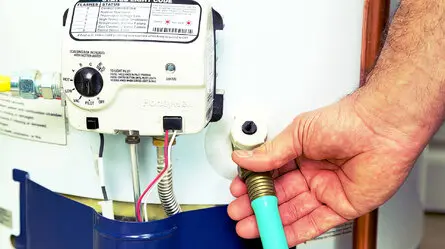People hardly ever think about how various bathroom fixtures work, especially toilets, because few people are interested in waste disposal. We generally pay attention to them only when there is a blockage.
We aren’t calling you ignorant; it’s just that most people find the topic of toilets and waste gross and choose to avoid it instead. But today’s guide will tell you how toilets work while explaining the mechanism of various toilet types. Knowing this will help you install the correct bathroom fixture.
Proper waste management practices help the environment, save money on water bills, and keep you hygienic. Just a heads up - water flowing down a running toilet when you flush the toilet tank may seem simple, but there’s more to it than meets the eye!
How Does A Toilet Work?
You probably understand that when you push a button or pull the handle, water in the cistern flows down the waste pipe. It seems simple, mainly because modern toilets rely on gravity. However, there are several intricate details behind these devices. Knowing how they work can be invaluable when your toilet doesn’t flush.
For instance, how does the water not overflow the toilet tank, or for how long does the toilet flush? These are some questions we will answer in the following sections.
1. Conventional Flush Toilets
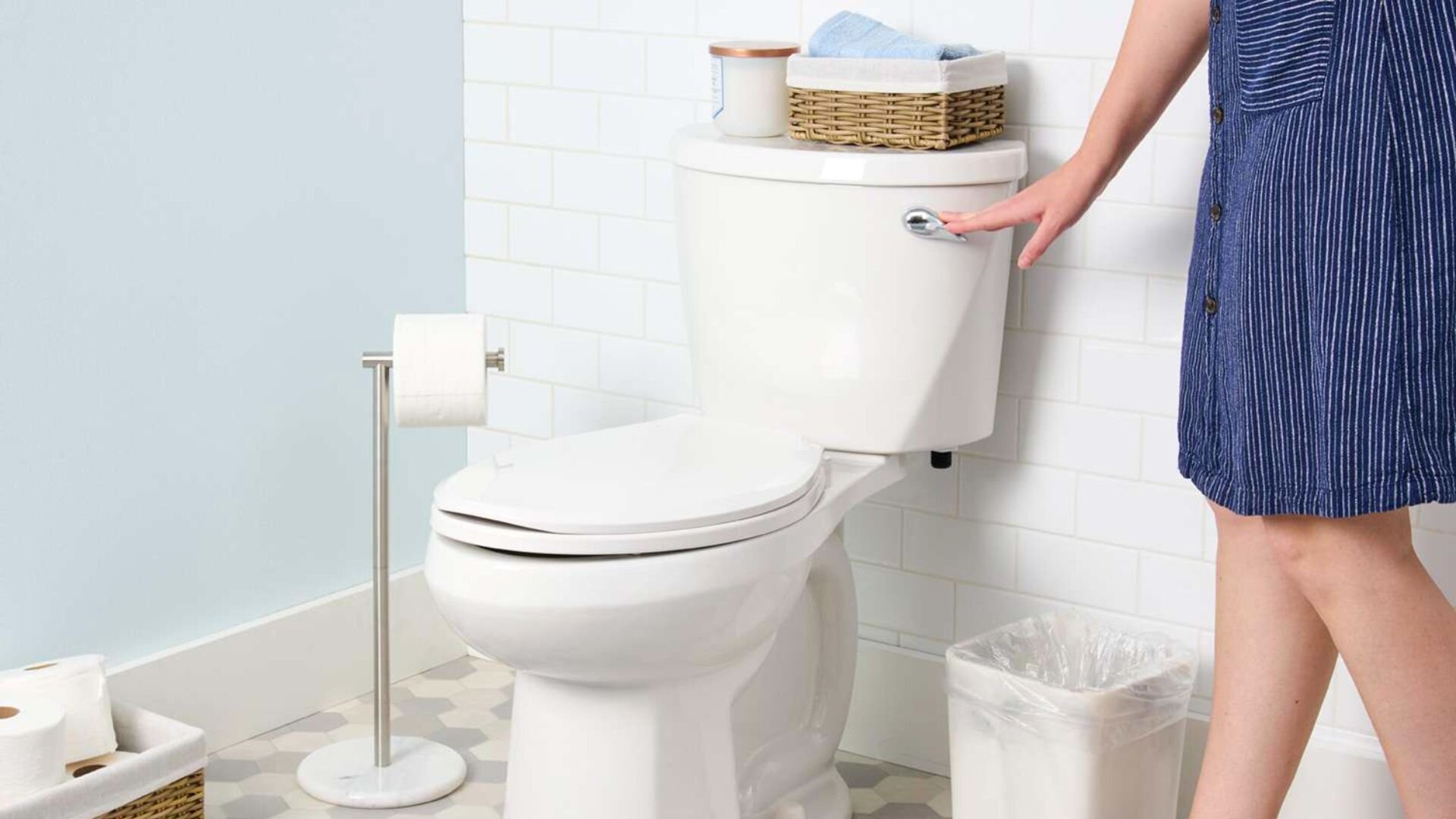
A. Flush Handle
Most flush toilets have a flush handle that you must pull to set the human waste disposal process in motion. Pulling the flush automatically triggers the lever in the cistern, a water tank above the toilet bowl.
B. Flush Valve
When you pull the lever, it opens the flapper valve, allowing water from the cistern to empty into the bowl through a siphon mechanism. The S-bend in the pipe, which curves up and then down, helps create this effect.
This action generates momentum, creating a suction that ensures the tank empties properly for efficient waste disposal.
C. S-Bend
If you look inside the cistern, you will notice holes at the bottom of the rim. The flushing mechanism pushes water through the rims to wash the bowl and filter the solid and liquid waste away.
You will also find that despite flushing toilets, there is always a little water at the bottom of the bowl. The S-trap ensures the toilet doesn’t drain completely, sealing the sewage to prevent bad smells or germs from coming up the toilet.
D. Float Valve
As the water flows down the main drain, the float ball inside the cistern drops and tilts another lever. This lever activates the toilet fill valve and causes it to open at the base of the cistern, following which the water supply fills the toilet tank again.
When the water level within the cistern increases, the float rises to the required level, triggering the toilet fill valve to stop the water flow. After this, the toilet is ready to repeat the flush cycle, which is how a modern toilet works.
2. Macerating Toilets
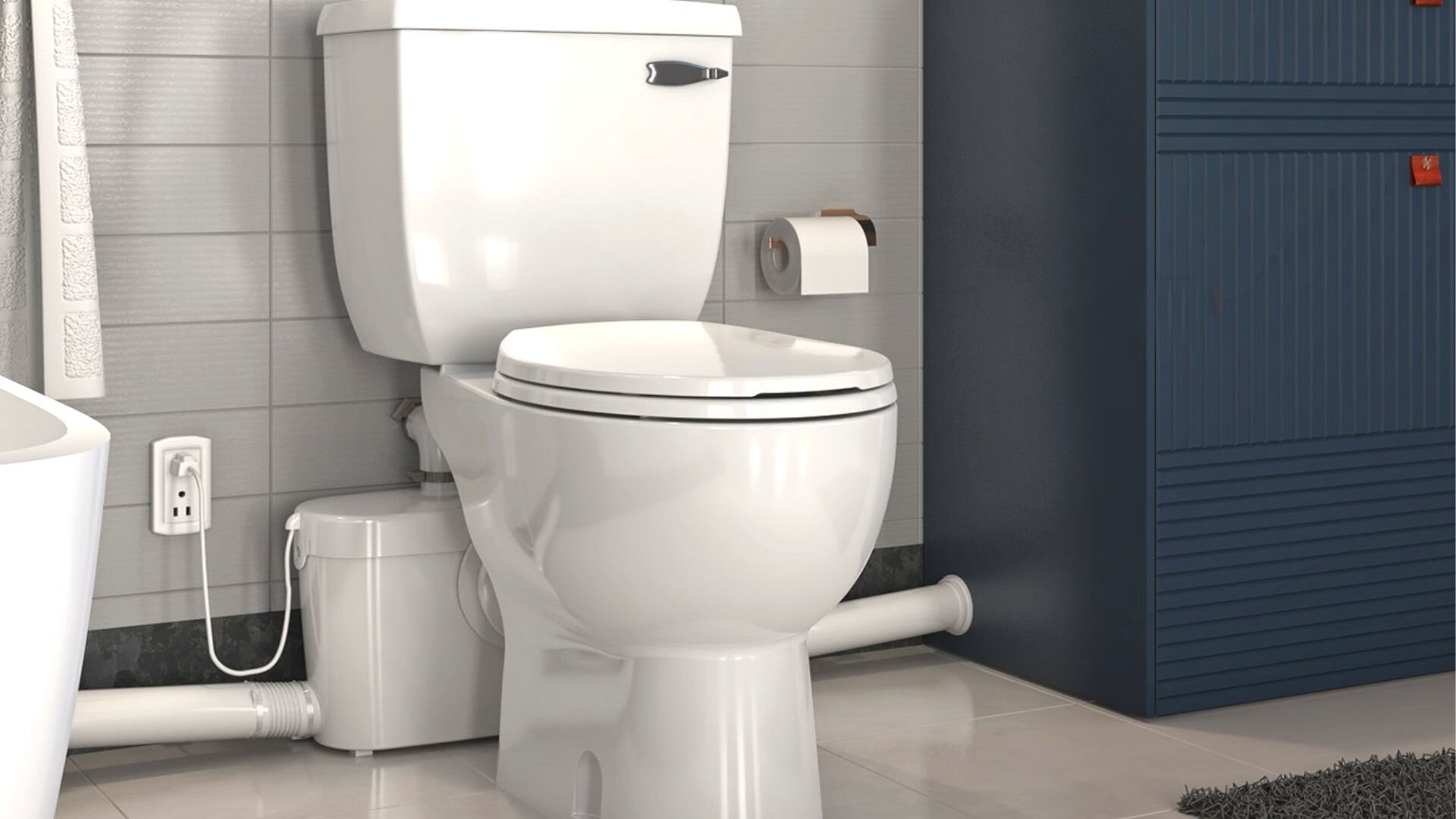
Another type of flush toilet for your home is the macerating toilet, a combination of a waste disposal unit and a conventional toilet. These big models can be installed in any convenient spot with sufficient water and electricity supply.
In many large buildings, you’ll find macerating toilets installed in spots like basements or in central areas with the drain pipe above them. Known as up-flush toilets, they work by dropping waste into a blender that liquefies it and pumps it through a slim pipe.
This pipe connects to the main soil pipe to complete the disposal process. However, their large size and many toilet parts make these units less discrete and noisier, which could be inconvenient.
However, even though they can handle large amounts of waste, macerating toilets tend to be more expensive and somewhat less reliable than other modern types.
3. Vacuum Toilets
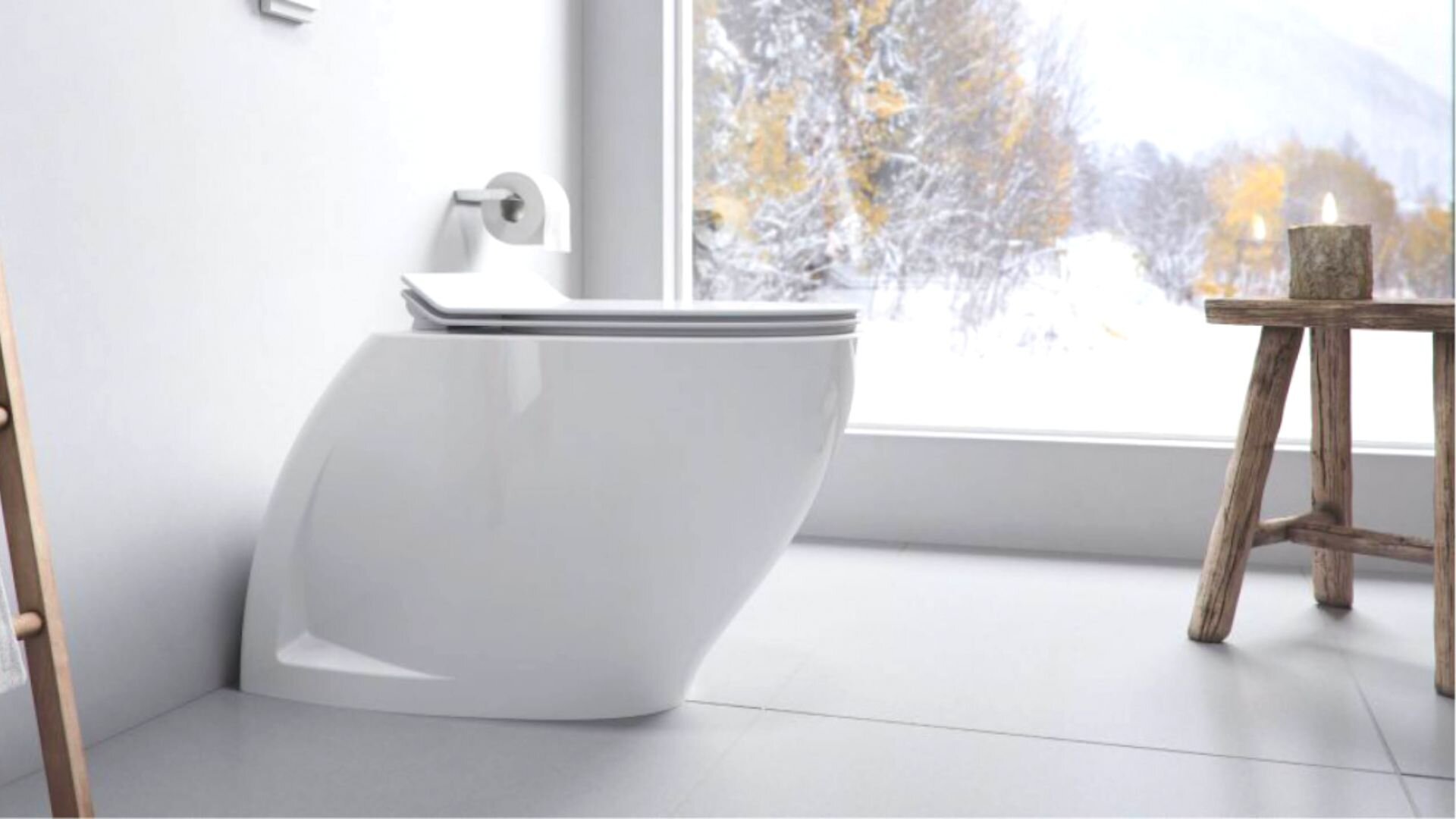
A vacuum toilet uses air pressure instead of tank water to clean toilet bowls and flush them properly, making them an eco-friendly option for smooth waste disposal. Usually, when you flush the toilet, excess clean water is wasted, which can be put to better use.
Also, it’s challenging to install a toilet with a large tank and all the necessary plumbing fixtures in buses, trains, or other forms of transportation. That’s where toilets with a vacuum mechanism prove useful, as they function without requiring as many components.
At the base of the toilet bowl is a sliding valve that seals it from the rest of the components. When you flush the toilet tank, it pushes a tiny amount of water into the bowl, partly filling it and rinsing the surface. But behind the wall is a small, plastic air tank that rapidly pumps out air instead of a large water tank.
This creates a vacuum effect, and the flush valve seat under the bowl is triggered open to amplify the air pressure difference between the tank and the room. As the waste is sucked into the tank, the flush valve closes, and air flows into the intermediate tank to push its contents into a larger waste tank.
4. Composting Toilets
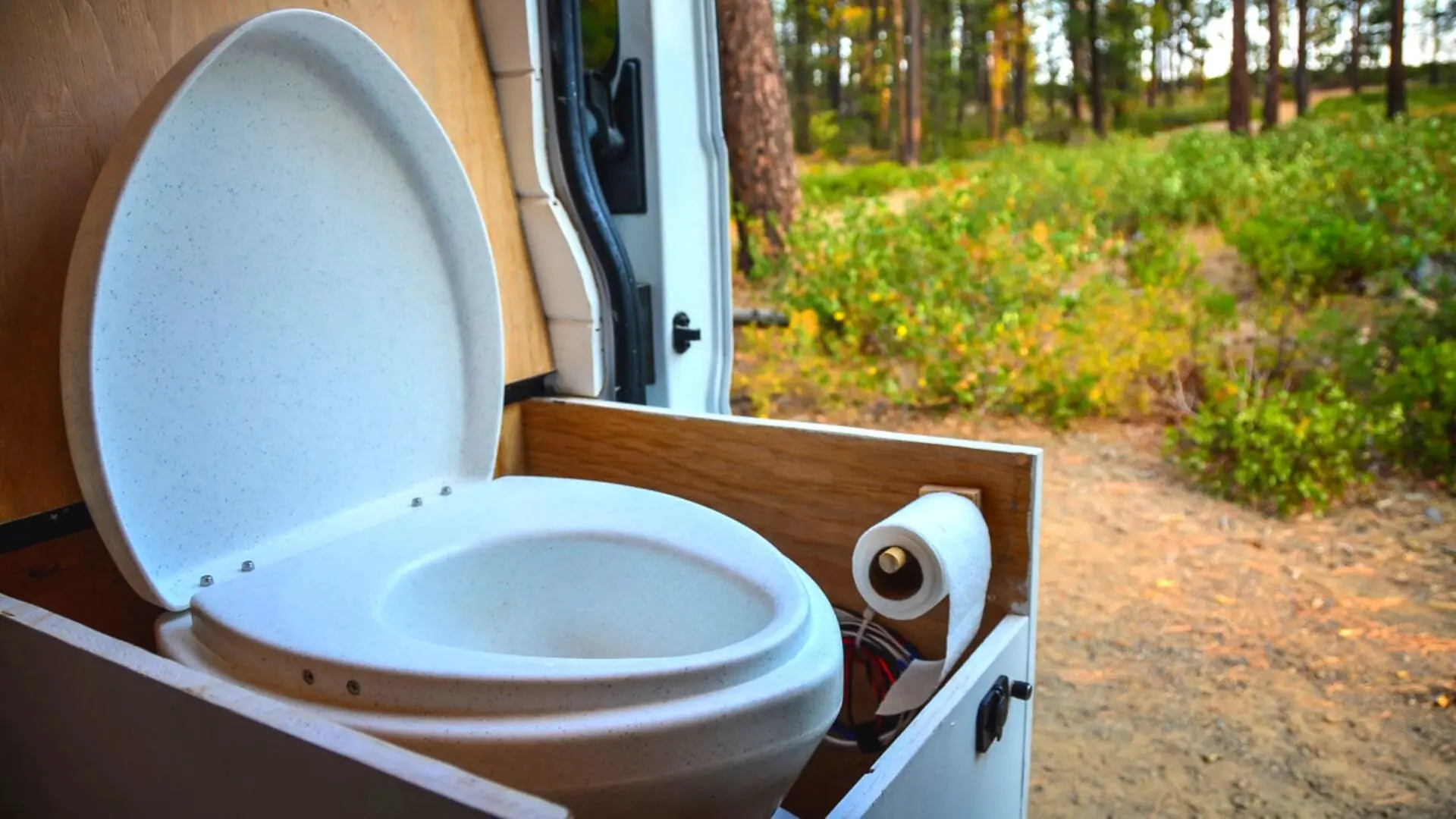
One of the significant issues with primitive toilets is that despite a complete flush, the tank’s water doesn’t dispose of the waste and merely deposits it elsewhere. So, for effective disposal of waste and to prevent harmful sewer gases from filling the bathroom, you can use a composting toilet.
The primary purpose of composting toilets is to compost the waste safely within the premises of your property by using outdoor toilet housing. This housing consists of a waste drum that rotates thanks to a gear mechanism attached to its back.
At the bottom of the drum, a mesh allows the liquid to pass through and collect on the false toilet floor. Here, it evaporates, owing to a heating element, while the solid waste undergoes compositing due to the higher temperatures.
Once composted, the waste drops into a removable drawer that you can empty every few weeks.
If needed, a crank handle is attached to the drum, which you can use to rotate it for further aeration and composting. The toilet bowl opens into the waste drum since the main bowl is mounted over the opening.
Turning the handle triggers the small gear connected to the crank handle, which helps rotate the drum easily. The waste drum has perforations for better aeration, while the outlet pipe allows waste gases to escape to promote hygiene.
Water-Saving Features Of Toilets
Water conservation is a crucial aspect of sustainable living, and it extends to our daily routines, including our use of toilets. Most modern toilets incorporate water-saving features to help homeowners save water, reduce their water bills, and contribute to environmental preservation. Two standard water-saving features in newer toilets are dual-flush functionality and low-flow technology.
Dual-flush toilets have gained popularity because they provide different flushing options for liquid and solid waste. With a dual-flush toilet, users can choose between a lower flush volume for liquid waste and a higher flush volume for solid waste. This flushing mechanism allows homeowners to use only the necessary water for each flush, resulting in significant water savings over time. By utilising a toilet with dual flush, homeowners can control their water usage and contribute to water conservation efforts.
Low-flow toilets are another water-saving option commonly found in modern bathrooms. These toilets are designed to use less water per flush compared to older-style toilets. Low-flow toilets save water without compromising flushing power by optimising the flushing process and effectively reducing the water required to clear the bowl. Homeowners can enjoy the benefits of a fully functional toilet while conserving water and reducing their water bills.
The water-saving features in dual-flush and low-flow toilets offer homeowners an effective way to save water and promote sustainability. By upgrading these new toilets, homeowners can actively contribute to water conservation efforts and reduce their environmental impact. It’s worth noting that homeowners should consider their water pressure when considering water-saving features. Some toilets may require specific water pressure ranges to function optimally, so consulting with a professional plumber or checking the manufacturer’s specifications is advised.
The Wonders Of Your Toilet - Understanding How It Works
But knowing how a toilet works is only half the job because you must maintain it properly.
You shouldn’t do this yourself, but hire a licensed plumber to quickly locate any overflow tube, fill valve, or waste pipe issues. They possess the expertise and know how to work with the latest gadgets to replace faulty components in the toilet tank, like the flush valve or rubber flapper. If you are in Perth, contact our expert plumbers at Woolf Plumbing & Gas.
Whenever you find that the flushing mechanism isn’t working smoothly or the tank water is filling slowly, don’t hesitate to get help. Most seemingly minor issues turn big when neglected for too long.
Keen to know more about your toilet system? Check out our guide on DIY toilet flange repair to save time and cash!
Toilet FAQs
How does the water enter the toilet tank?
The water enters the toilet tank through the inlet valve connected to the water supply line. When the tank water level drops below a certain point, the inlet valve opens, allowing fresh water to flow into the tank. This process continues until the tank reaches its predetermined fill level.
What is the role of the toilet flapper valve?
The toilet flapper valve is a crucial component that controls the flushing process. When the flush lever is pressed, it lifts the flapper valve, releasing water from the tank into the toilet bowl. This flushing creates a siphon effect, efficiently removing waste from the bowl and into the drain pipe.
How does the toilet maintain a watertight seal?
A watertight seal is created between the flapper and flush valve seats to prevent water from continuously flowing into the toilet bowl. When the tank is complete, the flapper valve rests on the flush valve seat, creating a seal that prevents water from escaping into the bowl. This seal is essential for maintaining the tank’s water level.
What is the function of the flush lever?
The flush lever, commonly located on the side of the toilet tank, initiates the flushing process. When pressed, it lifts the flapper valve, allowing water to flow from the tank into the toilet bowl. The flush lever returns to its original position while the flapper valve closes to stop the water flow.
What happens when the tank fills after flushing?
After flushing, the tank begins to refill with water. The inlet valve reopens, allowing water to enter the tank from the water supply line. As the tank fills, the water level rises, and the float mechanism attached to the inlet valve signals when the tank has reached its desired fill level. The inlet valve closes to stop the water flow, readying the toilet for subsequent use.


